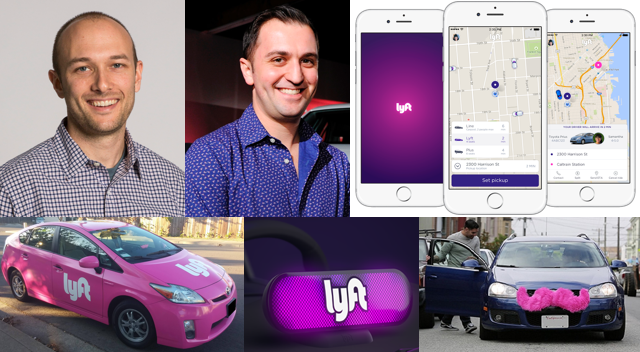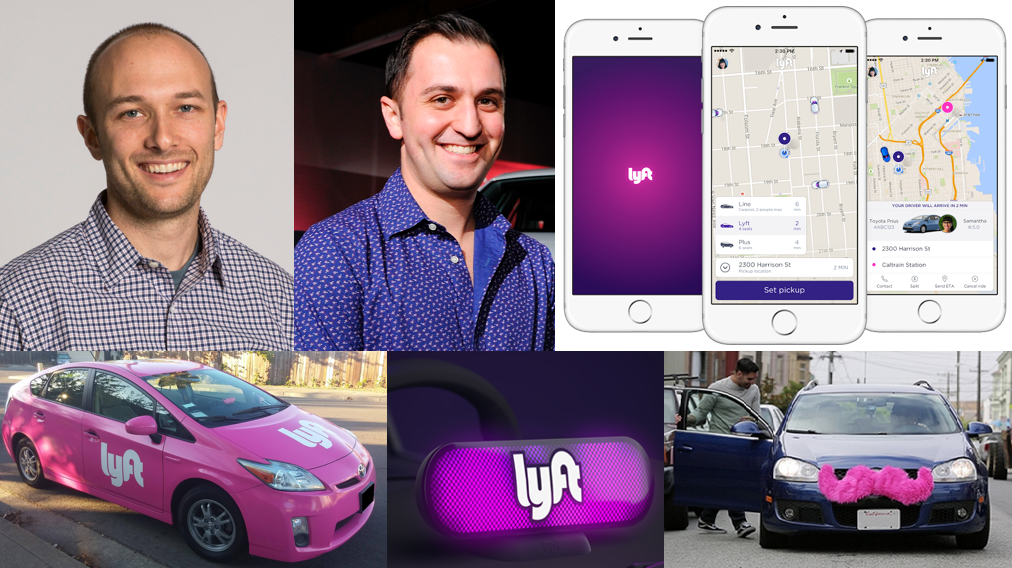
Unicorns 23/229 – Lyft
LYFT
Founders: Logan Green, John Zimmer
Key people: Logan Green (CEO), John Zimmer (President), Derek Kan (Gen. Mgr.)
Lyft is a transportation network company based in San Francisco, California. It develops, markets and operates the Lyft car transportation mobile app. Launched in June 2012, Lyft operates in approximately 300 U.S. cities, including New York, San Francisco and Los Angeles and provides 18.7 million rides a month. The company was valued at $7.5 billion as of April 2017 and has raised a total of $2.61 billion in funding.
History
Establishment
Lyft was launched in the summer of 2012 by Logan Green and John Zimmer as a service of Zimride, a long-distance ridesharing company the two founded in 2007. Zimride focused on ridesharing for longer trips, often between cities, and linked drivers and passengers through the Facebook Connect application. Zimride eventually became the largest rideshare program in the United States (U.S.).
Green had the inspiration for Zimride after sharing rides from the University of California, Santa Barbara campus to visit his girlfriend in Los Angeles. He had used Craigslist’s ride boards but wanted to eliminate the anxiety of not knowing the passenger or driver. When Facebook opened its API to third-party developers, Green said he thought “Here’s the missing ingredient.” Green was introduced to John Zimmer through a mutual friend and the pair initially met on Facebook. The company name comes from the country Zimbabwe, where, during a trip in 2005, Green observed locals sharing minivan taxis. He said, “I came back to the US inspired to create that same form of transportation here.” Green had coding experience and was able to develop the site in four months. Zimride launched the first version of the rideshare program at Cornell University, where, after six months, the service had signed up 20% of the campus. By using Facebook profile information, student drivers and passengers could learn about each other.
In May 2013, the company officially changed its name from Zimride to Lyft. The change from Zimride to Lyft was the result of a hackathon that sought a means of daily engagement with its users, instead of once or twice a year.
Transition to Lyft
Whereas Zimride was focused on college campuses, Lyft launched as an on-demand ridesharing network for shorter trips within cities. Similar to Zimride, the app connects drivers with cars to passengers that need rides. Drivers and passengers rate each other on a five-star scale after each ride, and the ratings establish the reputations of both drivers and passengers within the network. In order to take advantage of the Lyft system, clients must set up an account that links directly to a funding source such as a debit card or PayPal account. Once the ride is completed, funds are debited from the funding source. Lyft then retains 20% from drivers who applied before January 2016 and 25% from those who applied starting January 2016 of this total as a commission.
As a brand, Lyft became known for the large pink furry mustaches drivers attached to the front of their cars. Riders were also encouraged to sit in the front seat and fist bump with drivers upon meeting. In January 2015, Lyft introduced a small, glowing plastic dashboard mustache it called a “glowstache” as an alternative to the large fuzzy mustaches on the front of cars. The transition was to help overcome the resistance of some riders to arrive at destinations, such as business meetings, in a car with a giant mustache. In December 2016, Lyft introduced a new color-changing dashboard indicator called “Amp.”
In April 2014, Lyft launched in 24 new U.S. cities in 24 hours, bringing its total to 60 U.S. cities. In August 2014, the company introduced Lyft Line, allowing passengers to split fare on shared rides.
Due to regulatory hurdles in New York City, the company decided to significantly alter its business model to establish Lyft on the East Coast. Lyft’s launch in New York City occurred on the evening of July 25, 2014 and, in accordance with the Taxi and Limousine Commission (TLC) and the approval of the Manhattan Supreme Court, only drivers registered with the TLC were permitted to drive Lyft-branded vehicles in New York City.
In May 2016, Lyft began offering a service to let clients schedule rides up to 24-hours in advance. Also in the summer of 2016, Lyft started to offer riders the ability to make multiple stops during a trip.
In January 2017, Lyft announced it would add 100 U.S. cities, bringing its total to 300 U.S. cities served.

